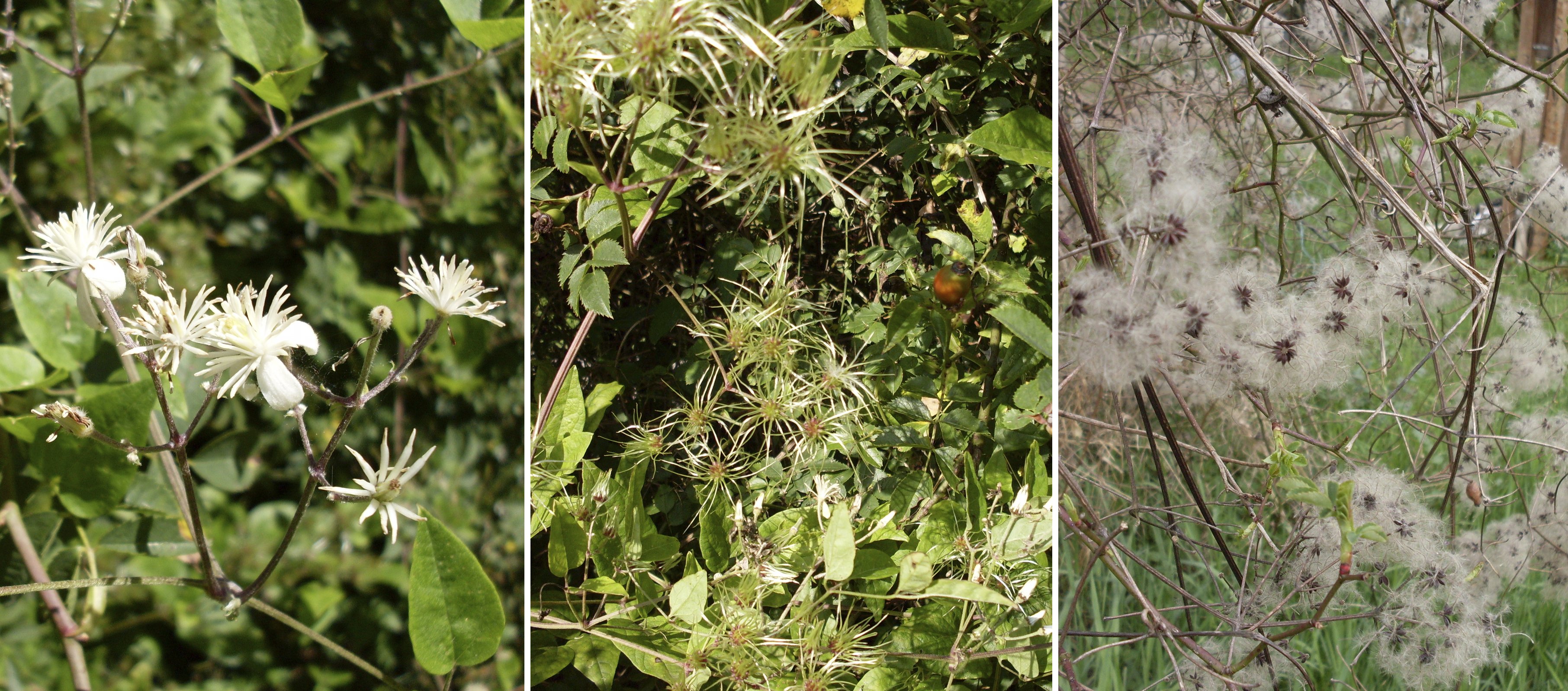Wild Clematis

Wild Clematis
(Clematis vitalba)
Priority: - Established / Strategic Control
Tags: Terrestrial
Identification and Reproduction
Identification
- Deciduous perennial plant that grows from woody stems. This vine can grow 20 to 30 metres long.
- Stems are dark purple to green and will tightly twist around objects.
- Wild clematis leaves are pinnately compound, composed of 3 to 5 leaflets.
- Also known as "Old man's beard", this plant has clusters of white to green flowers. They will ripen into leathery or fluffy seed heads, which will persist over winter.
Reproduction
- Typically produce flowers and seeds after third year. Seeds are easily dispersed by wind, water, people and animals.
- Can reproduce vegetatively by re-growing from roots and stems.
- Wild clematis is a very aggressive plant and grows five to seven times faster than ivy!
Habitat & Ecology
It is found in and around forested areas, wet, riparian and recently disturbed areas.
Impacts
Ecological:
- Chokes out native forest species by blocking sunlight.
- Weighs down trees until they collapse or the branches break.
- They grow in dense mats. covering existing vegetation.
- Rapidly grows along and over water passages impacting water flow.
Management
Mechanical/Manual Control:
- Cut climbing vines near base and allow upper vines to die off.
- Dig and pull out groundcover during the winter months when the leaves have fallen.
- Be sure to remove all stems and roots to prevent regrowth.
- Plant native groundcover and conifer species to revegetate area.
Resources
For more information on wild clematis check out the Global Invasive Species Database here.
King County is also an great resource for wild clematis identification and management. Note that they are based in the US and Canadian guidelines and regulations may differ. Be sure to follow chemical labels before use.
Header photo (Johnny SB).



